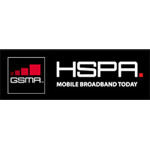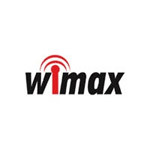Last week Las Vegas played host to the Consumer Electronics Show – the biggest event of the year in terms of electronic gadgets. All the big names from the world of TV, Gaming, Audio, and Mobile phones were there, each trying to out shine their competitors by revealing their product line ups for 2011.
While most gadgets that were announced are exciting, we were more interested in the mobile phone side of things, but as it turned out, it’s not all such good news – not for us in the UK anyway. All the 4G handsets that were announced are US only – with the exception of the Motorola Atrix which has already been confirmed as coming to the Orange network, but without the 4G branding.
Introducing 4G
Most people have heard of 3G phones. The technology has been around for about ten years and is now pretty much the standard. For those that aren’t familiar with it, 3G allows mobile phones to access the internet at higher speeds, make video calls and allows you to browse and call at the same time. 3G is more about the speeds and network capacity than features such as emailing, internet, tethering etc. These features are all possible because of 3G, but some will still work even on a slower 2G or GSM connection.
4G takes fast data connections several steps further, but unlike 3G, there is no defined standard yet for 4G and this is bound to cause some confusion. If you’d asked a few years ago what was likely to become 4G, you’d have probably been told Wi-Max or LTE, but now it turns out that Wi-Max is all but ruled out, and a tweaked version of 3G, HSPA+, is likely to become the standard for 4G. Confused yet? I know it’s a bit tricky to understand, so here’s a bit more about each of the different technologies.
LTE – Long Term Evolution
 LTE is already available in the USA and will be rolling out to more countries this year, but the UK isn’t one of them. A UK release is planned, but we will be behind most other countries when it comes to LTE deployment by around 2 years.
LTE is already available in the USA and will be rolling out to more countries this year, but the UK isn’t one of them. A UK release is planned, but we will be behind most other countries when it comes to LTE deployment by around 2 years.
LTE can provide speeds of upto 150 mega bits per second, compared to most current 3G networks which can provide speeds of up to 7 mega bits per second, (this varies by location and network).
HSPA+ – High Speed Packet Access
 This is an even faster version of current 3G technology with maximum speeds of around 42 mbps. Although HSPA+ is slower than LTE, it’s an easier and cheaper option for the networks to upgrade to.
This is an even faster version of current 3G technology with maximum speeds of around 42 mbps. Although HSPA+ is slower than LTE, it’s an easier and cheaper option for the networks to upgrade to.
No new licenses are required in order for the networks to run HSPA+, but transmitters and other equipment needs upgrading. Some UK networks are already using HSPA+ to provide speeds of around 21 Mbps and are calling it their 3G+ service.
Over the coming months I’d expect some networks to start using the ‘4G’ tag and coverage should start to increase, becoming available in more places rather than just major cities and built up areas. HSPA+ networks are already in development and will run alongside LTE networks when they arrive in 2012/2013.
Wi-Max
 WiMax networks are still being developed, but they are focusing more on providing wireless broadband access and computer networking, rather than mobile phone services.
WiMax networks are still being developed, but they are focusing more on providing wireless broadband access and computer networking, rather than mobile phone services.
Manchester was one of the first places in the UK to launch a commercial WiMax service, where people can access fast broadband, without the need for a phone line.
Some phones are likely to be launched with WiMax support, but it’s unlikely to become the standard for 4G phones.
All this of course is subject to change – Ofcom still need to allocate all the necessary bandwidth in order for all this to be possible, and as is often the case in the world of mobile phones, nothing is certain until it actually happens!